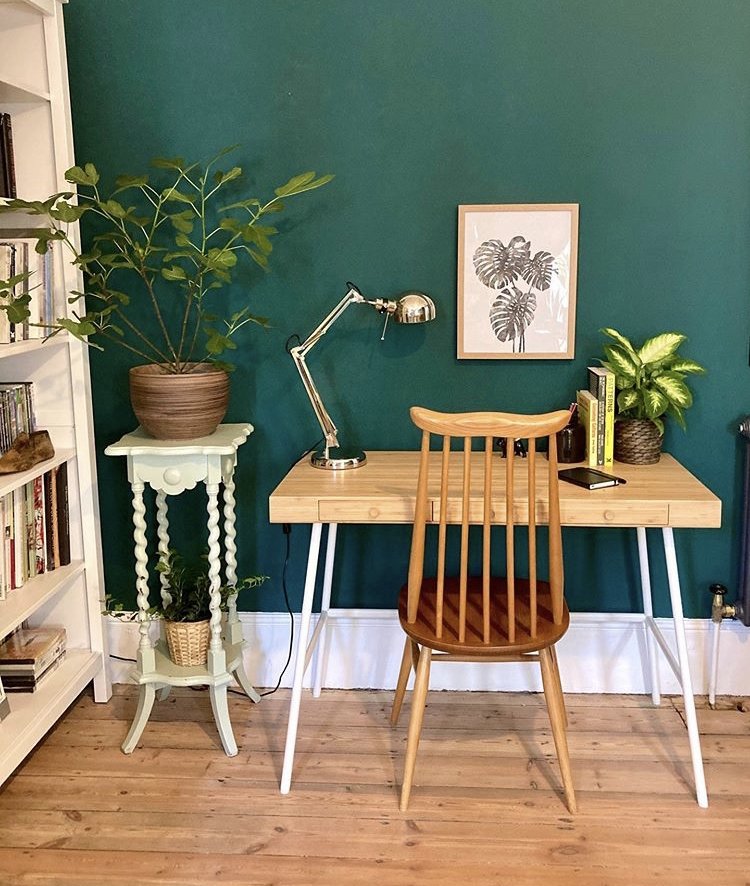What is 'Healthy' Interior Design?
Healthy Interior Design includes the careful consideration of the materials that are used within the creation of a space - selecting those that are not detrimental to the environment or the health of the occupants.
Choosing an environmentally friendly, water based paint for example, will ensure you don’t fill your space with toxic chemicals. Look for paints that have no or low VOCs on the pot. VOCs or Volatile Organic Compounds are airborne chemicals that enter our atmosphere which we then breathe in. We’re so used to accepting the ‘new’ smell of paint, a new car or wardrobe, but it’s actually the chemicals off-gassing and these can be really bad for us.
While paint has the wonderful effect of changing the feeling of a space, it can have a far more sinister effect on the health of the occupants (& decorator!). This has literally been ignored until recently.
There’s all sorts of ingredients added to paint that can have a negative impact upon our health - from titanium dioxide, which is often added to white paint as a colouring pigment yet it’s a known nose and throat irritant as well as being a suspected carcinogen - to metals that help facilitate the drying process, yet many (eg. cobalt, manganese and calcium) are associated with heart and lung diseases.
Thankfully there’s so many amazing eco paint brands out there. They are more expensive than standard paint, but it is absolutely worth it for you and your family’s long term health.
If you imagine your home as a doll’s house and take a bird’s eye view at all the rooms you have painted walls in. That’s a lot of paint right? Little boxes filled with invisible clouds of chemical gases we are all breathing in daily. Having heard so much about pollution from cars, factories and transport it’s hard to shift the idea that outside air is poor and inside air is better but the opposite is actually true. Indoor air is now up to 5 times more polluted than outdoors!
As most of us spend 90% of our time indoors, making sure our internal environment is a healthy one suddenly becomes a lot more important.
When choosing paint, be sure to use the online paint calculator. Measure the width and height of each wall. Read the instructions on the website as to how many layers are recommended and you can then work out how much you need. This will help you budget and ensure you don’t run out. If you have dark walls and want to go light, be sure to use the same paint company’s primer.
Check out paint brands like
@farrowandball @littlegreenepaintcompany @lick @earthbornpaints @mylands_london @lakelanduk and my favourite at the moment @paintandpaperlibrary
But paint sadly isn’t the only potentially toxic addition to our homes. There are so many products we interact with daily that are just not good for our long term health. If you’d like to know what these products are, what chemicals they contain and how to avoid them, please join me at one of my workshops this summer.
I am holding fun, engaging and interactive sessions at the Therapy Life Centre in Westcliff-on-sea - dates coming soon.
Beautiful Healthy Home - healthy interiors and healthy products for your healthy home
Zoë x
This blog, website and its content are copyright of Beautiful Healthy Home Ltd - © Beautiful Healthy Home Ltd 2021. All rights reserved.
Any redistribution or reproduction of part or all of the contents in any form is prohibited other than you may print or download to a local hard disk extracts for your personal and non-commercial use only
You may not, except with our express written permission, distribute or commercially exploit the content. Nor may you transmit it or store it in any other website or other form of electronic retrieval system.



